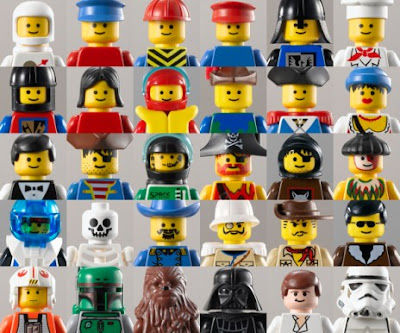Lego Minifigs
As a kid, my
brother and I loved playing with Lego. Best toy ever, in my opinion. It’s been
ages since I played with them last, which is perhaps why I missed this trend
wrt Lego “minifigures” (that’s the term used to refer to those toy figures of
Legoland; popularly shortened to “minifigs”). Apparently, the trend started in
1989 as per some study at the University of Canterbury in New Zealand: the
minifigs shifted more and more to “scowling,
frowning or snarling rather than smiling”. Have a look at this pic to see what they mean:
Wait, did I just say university study? Yup, that’s not a typo. Apparently, play is too important to be left to the kids (to paraphrase that famous saying about wars and generals). As this Telegraph article put it:
“The report is full of scatter graphs and
tables that show the “results of the linear curve estimations across the six
emotion categories” and a comically obtuse k-cluster analysis of spacemen
versus cavemen characters… I kid you not.”
Ok, ok we
believe you (Congrats, professor! You used enough high priest terms!). But why
the shift in minifig expressions? “It is our impression that the themes have
been increasingly based on conflicts,” say the authors of the paper. Apparently
the trend accelerated as Lego focused on movie themes like Star Wars, Harry Potter
and pirates. But wait a minute…so many of the imaginary scenes we played out as
kids involved good guy v/s bad guy scenarios. We imagined those regardless of
the minfig expression, didn’t we?
Methinks the
study is crap…and I so agree with the way the Telegraph article ended:
“…if Lego needs inspiration for its next
minifig, I suggest a pointed-headed academic, with an expression that makes him
look like he’s been sucking on a lemon.”

Comments
Post a Comment